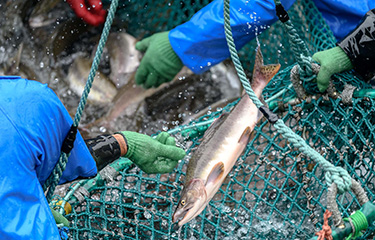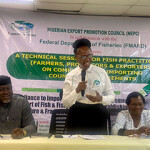NPAFC reports second-lowest North Pacific salmon catch since 2000

The North Pacific Anadromous Fish Commission (NPAFC) recently reported the 2022 salmon catch in its area of oversight at 710,400 metric tons, the second-lowest total since 2000.
The declines were blamed on lower landings of pink and chum salmon in Asia, where those species make up most of the catch, according to a NPAFC scientific committee report.
The Vancouver, British Columbia, Canada-based NPAFC, which includes Canada, Japan, South Korea, Russia, and the U.S. as members, manages wild Pacific salmon and steelhead on the high seas north of 33 degrees north latitude beyond the 200-mile exclusive economic zones (EEZs) of coastal states.
“Despite a growth in total catch compared to 2020, even-year pink salmon catch continued to decline to a level last seen from 1988 to 1992,” the report said. “The last time the pink salmon portion of total catch weight equaled 36 percent was in 1994 and 1996.”
Information presented during the commission’s 30th annual meeting – which took place 15 to 19 May, 2023, in Busan, South Korea – also highlighted that, for the first time in the history of Pacific salmon fishing, the sockeye catch exceeded that of chum, reflecting a continuing decline in chum catches since 2011 on the Asian side of the Pacific.
Pink salmon catches still comprised the majority of the commercial totals at 36.4 percent by weight, followed by sockeye salmon with 30.3 percent; chum with 30 percent; and coho with 2.3 percent. Chinook salmon, cherry salmon, and steelhead trout each made up less than 1 percent of the catch by weight, respectively.
Of the total catch, 50 percent, or 352,100 MT – of which 342,300 MT was taken in Alaska – was caught by the United States; while 37 percent, or 265,100 MT, was caught by Russia; 12.4 percent, or 88,200, was caught by Japan; and less than 1 percent each was caught by Canada, with 4,800 MT, and South Korea, with 138.3 MT.
The NPAFC scientific research and statistics committee also reported that hatchery releases of salmon and steelhead from member countries have been stable since 1993, with approximately five billion fish released annually.
To analyze regional variation in salmon trends across the North Pacific, member countries unanimously agreed to adopt a new plan for 2023 through 2027 that establishes a research framework to develop a mechanistic understanding of the impact of changing climate on salmon abundance and distribution trends.
At the meeting, the NPAFC also approved procedures to begin listing certain vessels as guilty of IUU infractions, and those procedures ...
Photo courtesy of Port_Folio/Shutterstock





Share